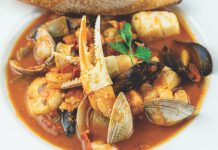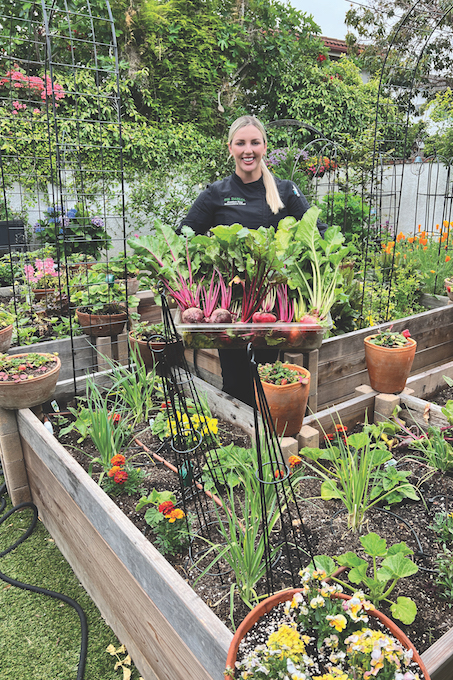
Grow your own food to create the dishes of your dreams with these tips from local experts.
By Ashley Ryan
Health-conscious dining has become increasingly prominent in recent years, with more and more people desiring to know where their food is coming from and how it’s grown. Some are turning to holistic techniques, using food as medicine to treat or heal what ails them. Still others have turned to gardening as a form of therapy, using it to combat the noise in their head or to pass the time—which was especially popular as the pandemic lingered.

Whatever the reason, growing a garden filled with fresh fruits, vegetables and herbs is a trend that is easy to get behind. Truly, few things compare to popping a fresh-grown strawberry into your mouth or biting into a juicy tomato that you raised yourself. “Watching it grow from this little tiny seedling all the way to a large plant that’s producing multiple fruits is pretty rewarding,” says Kyle Cheesborough, horticulture director at Sherman Library & Gardens.
These tips from local experts detail the wealth of benefits you’ll enjoy from growing your own food as well as how to get your hands dirty and what types of produce thrive in Southern California’s Mediterranean coastal climate.
Bountiful Benefits
As you consider growing your own bounty, it’s important to understand the wealth of benefits that come along with it.
“You buy things in the grocery store and you don’t know where it was grown,” says Sarah Smith, expert horticulturist for Roger’s Gardens. “A lot of things are picked before they’re even ripe, … because things like tomatoes and apples and berries get very soft. … So the flavor’s just not as good. There is not a strawberry in the world that tastes better than a strawberry that you grew and just picked and popped right into your mouth.”
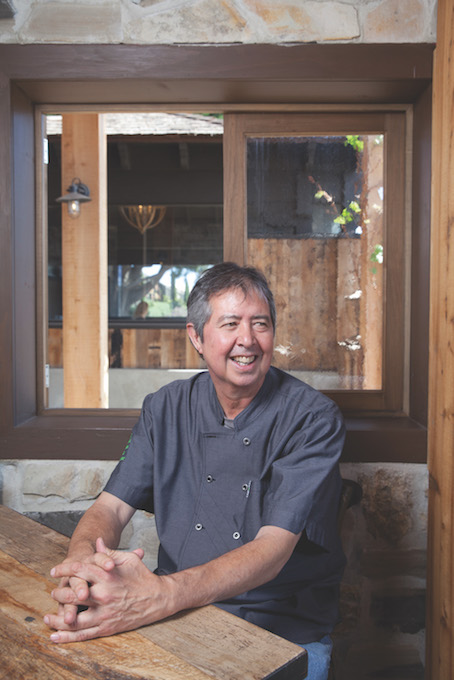
In the same vein, growing a garden allows you to control which sprays and fertilizers come into contact with the food you enjoy. As an organic plant nursery, Roger’s Gardens makes it easy to ensure your produce is safe and healthy.
Smith also says that, with ingredients like herbs, you can pick just what you need for that meal, helping to reduce food waste. Additionally, you can experiment by chopping up some of the herbs and throwing them on a dish to make it look more artistic and appetizing.
For Jessica Roy, executive chef and owner of Sherman Gardens’ 608 Dahlia restaurant, cultivating your own cooking garden can also teach you a lot. “Working [here] … really enhanced my desire to learn more about growing, because of the beautiful things I see everyday,” she explains. “As a chef, having my own [home] garden allows me to see various items at their infancy all the way to harvest. It has also given me a deeper respect for the whole process of farm-to-table [dining] and a sharper lens for quality and plant development.”
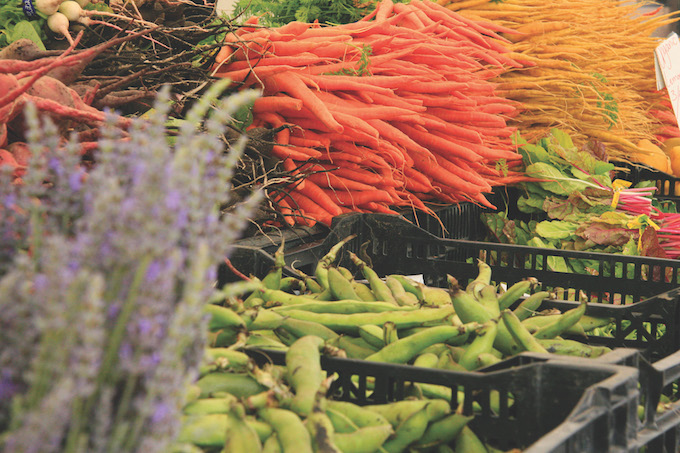
Gardeners can also enjoy the same benefits you would from taking a hike, as spending time in nature has been proven to reduce stress, improve memory, promote cognitive control and flexibility, enhance concentration, boost your mood and contribute to overall happiness, according to the American Psychological Association.
“The joy of gardening and just being connected to nature and the Earth—and knowing that you are planting and nurturing your own vegetables and fruits … and giving them so much love—[is even better when] you’re putting that love on the table for your family,” Smith notes.
She adds that it can be a great project for children, especially, as many of them don’t even know the types of trees or bushes that different produce grows on. “It’s a good way to get your kids invested and growing things and wanting to eat them,” Smith explains. “A lot of people say, ‘My kids won’t eat tomatoes,’ but if they grow that tomato with you, they’re going to be a lot more willing to eat it, because they’ve invested the time and emotion into it.”
Popular Produce
One of the most crucial decisions you’ll make when planting a produce garden is which fruits or vegetables to plant. “Here in Orange County, we are in [USDA Plant Hardiness] Zone 10B, which allows for a good amount of variety,” Roy notes. With such diversity at our fingertips, you’ll really want to examine which types of produce would be most beneficial to your cooking style. “I would encourage people to plant what they like to eat,” she adds.
Some items that grow best locally include lettuce, tomatoes, peppers, artichokes and fresh herbs. “They thrive well in the Southern California climate and offer a variety of flavors for culinary use,” reveals Rich Mead, executive chef and owner of Farmhouse at Roger’s Gardens.
Cheesborough agrees, adding that, in addition to leafy greens, broccoli, cabbage, snap peas and certain beans flourish in Orange County, providing a higher yield than warm season vegetables, and that trees suited to a Mediterranean climate, like olives or avocados, also do well here.
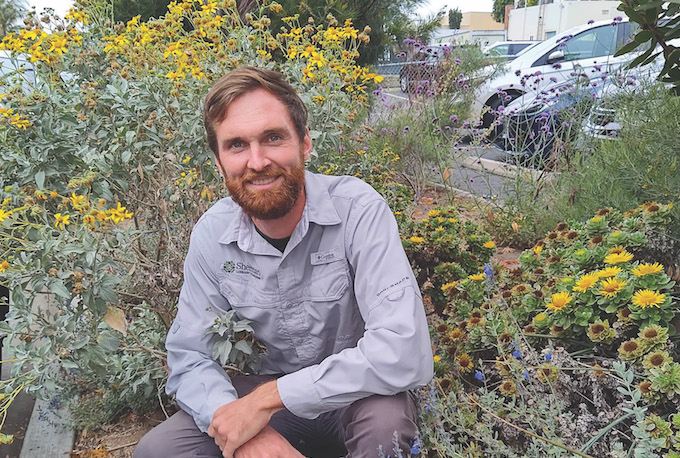
For Roy, who has a large garden at her Huntington Beach home as well as a small culinary space within the botanical garden, there have been advances in the development of fruit trees that allow them to thrive locally. “I have had great success with stone fruits and apple trees that are specifically low-chill varieties,” she notes. “My favorite variety that I have growing right now is my August Pride peach tree. It requires less than 300 chill hours and does beautifully in my coastal California backyard.”
Unique plants tend to catch her attention on a regular basis. She also has nine different citrus trees, ranging from kaffir lime to Valencia orange, as well as a nectarine tree, passion fruit vine, 14 raised beds for seasonal produce and eight additional planters for herbs and shade plants. “In my own garden, I plant with the seasons and, most importantly, I plant things that excite me to cook,” Roy says. “I look for interesting varieties that you cannot find everywhere to expand my repertoire.”
Still other options include strawberries, melons, squash, beets, carrots, cucumbers and peas, but one thing you may not have considered that Smith especially enjoys growing are edible flowers, including pansies, violas, marigolds and nasturtiums. “I love having flowers in the garden that I can throw onto a salad or [incorporate] if I’m baking something or [add to] a cocktail,” she reveals. “Those are little things anybody can grow in any size garden that make their dishes look like a million bucks and impress all their friends.”

And when it comes to planting with children, some plants may be more suitable than others. “Kids are impatient and they want something really easy and instantaneous,” Smith says. “I recommend things like radishes and green beans, because if they’re growing them from seeds—which kids love to do—they sprout really fast.”
You can also opt to begin with established vegetation as well. “Beginners can start with vegetables and herbs using starters or small plants available at garden centers,” Mead notes. “Experienced growers can experiment with more complex crops like summer berries.”
Guide to Growth
There are so many factors to consider when starting out that Roy says making a plan for your garden can contribute to your success. Consider everything that may impact your crops, from the amount of space and sunlight available to how often to water, which fertilizer to use and how you’ll overcome any challenges that arise.
“Plants are just like people,” Smith says. “When we eat well, when we sleep well, when we drink enough water and do all the good things, we don’t get sick. … That is key to being successful: the right environment with the right conditions.”
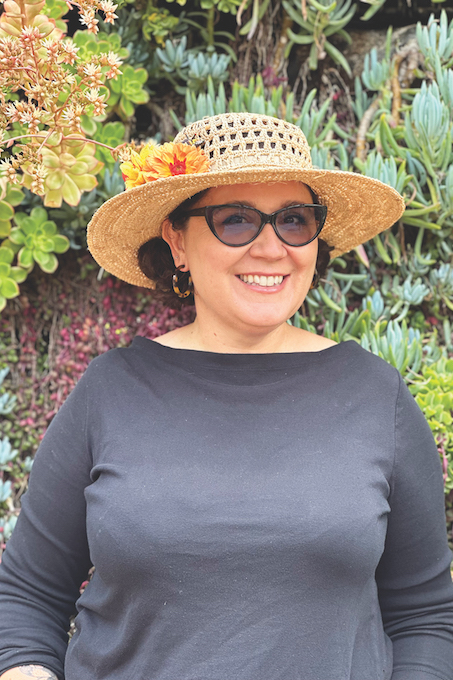
When it comes to sun exposure, be sure to purchase seeds or plants that align with your yard. Roy says this can sometimes be tricky, as her yard enjoys full sun but is sometimes shaded by her neighbor’s trees in the afternoon. “I deliberately plant things that can tolerate full to partial sun because of this microclimate,” she explains.
According to Smith, one of the biggest things that gardeners overlook is soil health. “It’s kind of like our gut biome,” she says. “I think because it’s below ground, people don’t think about it. But having the best soil and the best fertilizer and knowing how to apply them is going to make your plants more successful.”
Providing enough water for your garden is crucial as well, but you also want to make sure you don’t overwater. Cheesborough offers up a trick to try: “Take your finger, stick it about an inch or two into the soil. If it feels wet—you pull your finger out and it’s covered in little pieces of soil—leave it alone. If you put your finger in there, it’s nice and dry and comes out clean, water it.”
Sometimes consistency is key. It all depends on what you’re trying to grow. To ensure uniformity, Mead suggests a self-watering approach. “Implement a drip irrigation system with a timer to ensure consistent watering, even when away from home.”
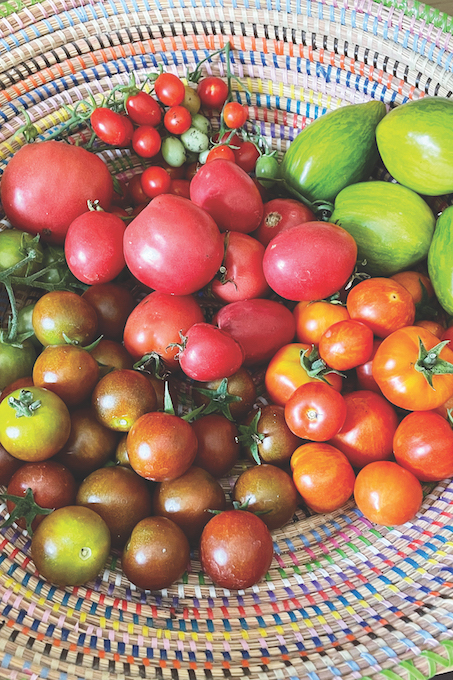
And don’t overthink it. Even if you’re worried you don’t have a green thumb, Cheesborough says to give it a try and, if you fail, try again. “Diligence is a big part of it,” he notes. “Just be willing to go out there on a regular basis and look at your plants. Look at the underside of the leaves, look at the fruit, look at the flowers. You can see if things look a little bit different … and then just go from there.”
If you feel stuck, these experts are on hand to help you out and get your garden back to where it should be. “Come and learn. We do classes [and] we do events. We have professional horticulturists here all the time and we’re happy to talk about exactly [this],” Cheesborough says of Sherman Gardens.
Smith agrees, noting, “At Roger’s Gardens, we want our customers to succeed with their gardens. Come in and ask questions.” You won’t be sorry you did once you have that first taste of a sweet summer strawberry.
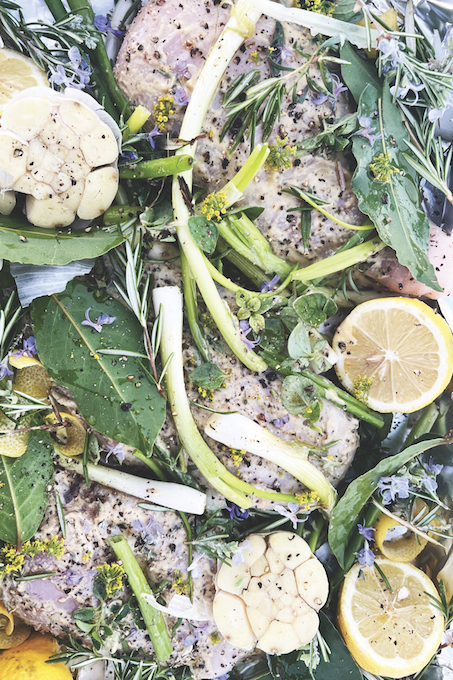
Oven-Roasted Herb Chicken
Servings: 4
2 organic chicken breasts
Salt and pepper
¼ cup Dijon mustard
10 bay leaves
10 sprigs rosemary
10 sprigs marjoram
10 sprigs dill
1 bunch thyme
1 bunch scallions
2 lemons, halved
2 whole heads garlic, halved
¼ cup extra-virgin
olive oil
Preheat oven to 350 F. Season chicken breasts with salt and pepper, then place on lined baking tray. Smother chicken with Dijon mustard. Arrange all herbs generously over chicken and around the edge of the pan. Scatter scallions, lemons and garlic throughout pan. Drizzle with olive oil. Bake chicken in preheated oven until internal temperature reaches 350 F (about 25-30 minutes). When done cooking, let chicken rest for 5 minutes. Serve with crispy scallions, herbs and residual juices. Optional: Pair with mashed or roasted potatoes and broccoli or another vegetable of your choice.
—Courtesy of Jessica Roy of 608 Dahlia




